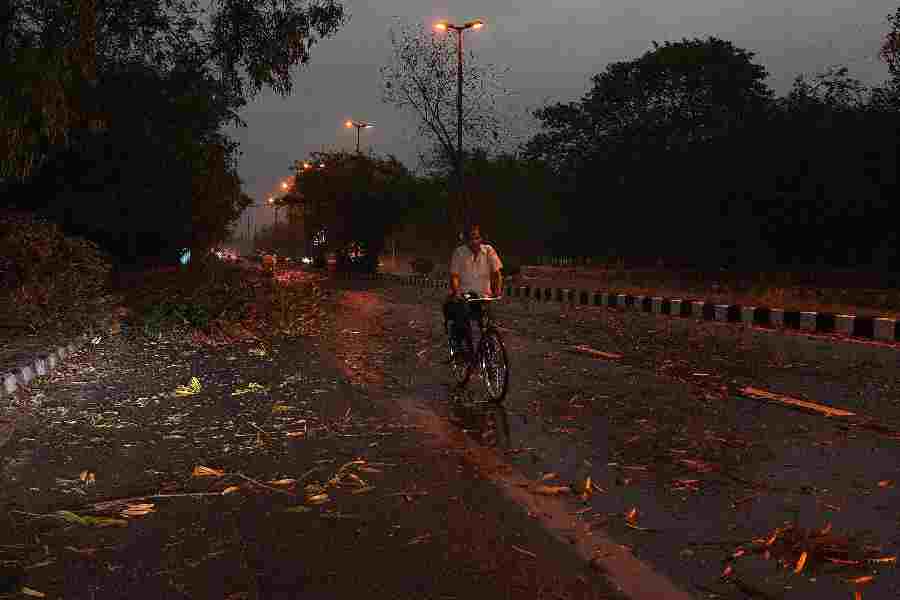 |
| A dog and its owner watch the annular eclipse of the sun in Madrid on Monday . (AFP)Eclipse enthusiasts in India need to wait for nearly five years to watch the solar disc temporarily turned into a ring by the moon. In Monday’s solar eclipse, India was well away from the belt of annularity ? the narrow band where the solar ring was visible. The annularity belt originated in the north Atlantic, cut across Africa and extended into the central Indian ocean. The eclipse would have been visible in India only as a partial solar eclipse where the moon blocks off only a small slice of the sun. In an annular solar eclipse, the apparent diameter of the moon is smaller than the face of the sun. The moon thus blocks off just enough of the sun to make it appear like a bright ring in the sky. The annular eclipse could not be seen from Calcutta. “We tried from 4.30 pm onwards but there was a cloud cover,” said Debiprosad Duari of MP Birla Planetarium. “Around 4.55 pm there was a break in the cloud cover but it was not enough to see the sun.” The eclipse was to start at 4:31:35 pm with maximum eclipse visible at 5:14:41 pm. Sunset was at 5:20 pm. Calcuttans last saw a full solar eclipse on October 24, 1995. A partial solar eclipse was observed on August 11, 1999, though the path of totatlity at 1999 passed through the breadth of the country. India will fall in the path of an annular solar eclipse on January 15, 2010. The annularity belt of that eclipse starts in eastern Africa and will enter India through Kerala, exit from Tamil Nadu, and extend to the coast of north China. Astronomers say the apparent diameter of the moon changes because it goes around the Earth in an elliptical orbit, and not a perfectly circular orbit. When the moon is a bit further than usual from the Earth, its apparent diameter is smaller than at other times, and the resulting eclipse will show the sun as a ring. Outside the belt of annularity, there is a huge shadow zone where a partial solar eclipse will be visible. In Algiers, today, the annularity would have begun at 09:05:07 UT and ended at 09:08:52 UT. In Delhi, the maximum partial solar eclipse would have been visible at about 11.25 UT. The eclipse blocked off just 10 per cent of the sun's face in Delhi, Nehru Planetarium, Delhi, director N Rathnashree said. |
 Monday, 05 May 2025
Monday, 05 May 2025









